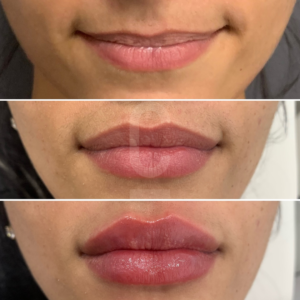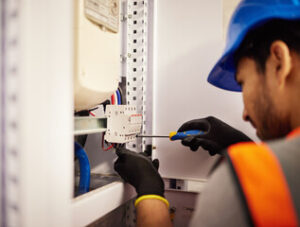Various fillers can be injected into the lips. Most are made of hyaluronic acid (HA) and last 6-12 months.
Your doctor may also use fat to change the shape of your lips. In this option, they will liposuction away some of your fat from the belly area, purify it, and then inject it into your lips. Contact LIP FILLER SAN DIEGO now!

The Cupid’s bow is that V-shaped area in the center of your top lip. It is named because of its shape, which resembles the cherub’s bow and arrow used to make couples fall in love. The bow is a natural lip feature but can be accentuated with makeup or dermal fillers for a more dramatic look.
The most common way to accentuate the Cupid’s bow is with lip liner. Before applying lipstick, lip tint, or lip color, line the upper lip with a darker shade of lip liner. This will highlight the edge of the lips and draw attention to the bow’s distinct double-pointed shape.
However, this technique has some limitations. It can be difficult to control the thickness of the line, and it may leave a visible mark. Fortunately, there are dermal filler techniques that can be used to create the desired effect without leaving any marks or a noticeable change in the shape of the lip.
A popular option is the Cupid bow lip filler technique, which uses a small amount of dermal filler to accentuate the two peaks of the bow and balance the upper and lower lips. This technique is particularly popular with patients who have a naturally pronounced Cupid’s bow or those who are looking to enhance their natural beauty.
This method is also useful for balancing out uneven or disproportionate lips and can help soften the effect of vertical lines. In order to perform the procedure effectively, it is important that the cosmetic provider has a deep understanding of the anatomy of the lip. This includes a precise knowledge of the location and position of the arteries that run through the lip. Injections of the wrong substance in these areas can lead to vascular occlusion, which can be dangerous and requires medical attention.
The best lip filler treatment providers know how to carefully navigate these sensitive areas and can deliver a natural-looking result. They have a thorough understanding of the lip contour and how to shape it for a more youthful appearance.
Philtrum
The philtrum, or the vertical indentation of the upper lip that extends from the nose to the Cupid’s bow, is a prominent feature in the upper face. It is a defining characteristic of the upper lips and serves to identify the person speaking, even when their lips are not open.
It is a result of both the shape of the lip and its positioning relative to the face and other body features. The philtrum is often an important part of the facial expression “I’m sorry,” which is a common phrase uttered when someone accidentally hurts themselves or feels embarrassed. The philtrum may also be visible when someone is crying, as in the emotion of sadness.
A long philtrum can be genetically inherited, and short philtrums are more commonly caused by some conditions. For example, a short philtrum can occur due to cleft lip and palate surgery, secondary cleft lips associated with cleft noses and other facial deformities, or fetal alcohol syndrome (FAS).
The shape of the philtrum can be altered through various procedures. Among the most popular are the use of filler in the area to make it longer and more defined. Filler can also be used to add volume and fullness to the area around the philtrum.
However, these techniques can be risky, as a misplaced filler injection can give the impression of overly large lips. It is important that a facial cosmetic surgeon or other highly-trained injector carefully observes your lips’ detailed underlying anatomy and muscular movements to understand how dermal filler can be used in the best way for your unique aesthetic.
This study aimed to determine a better method to measure the philtral development in early stages of gestation and perceive its growth pattern throughout the course of normal and pathological fetal development. It also sought to examine the relationship between philtral abnormalities and craniofacial anomalies, as well as to offer a simpler approach to the diagnosis of philtrum malformations. The authors proposed that a primary philtrum repair should be accomplished by marking a smaller, narrower philtral flap within the philtrum, then discarding the oversized philtral skin lateral to the markings.
Corners of the Mouth
The corners of the mouth are a key factor in the overall appearance of the lips. They can have a positive effect when lifted, but they can also look very sad when drooping or sagging. Dermal fillers like hyaluronic acid can be used to create an upturn in the corner of the lip or add volume to this area, which can make the lips look fuller and more youthful.
The corner of the mouth can be lifted using surgical techniques, such as a Z-plasty,19 lentiform excision,20 or triangular excision;22 and nonsurgical methods, such as injection of botulinum toxin (Botox, Allergan) or fillers.23,24 Surgical techniques generally provide more visible results than nonsurgical treatments. However, it is not clear whether the differences between the two approaches are due to the different techniques or to the different effects of the fillers and neurotoxins.
Drooping or sagging corners of the mouth can cause a frowning expression that looks unnatural, even when smiling. Dermal fillers can give the corners of the mouth a more upward lift, which can help the face look happier and less sad.
Adding volume to this area can also make the upper and lower lip appear more proportional, which is important for facial balance. It’s best to inject the nasolabial folds or marionette lines (also called bar code lines) first, because this can sometimes lift the corners of the mouth up more effectively than just injecting the body of the lip.
All of the experts Allure spoke to agreed that you can have a consultation and an injection on the same day, although some patients prefer the traditional two-appointment process. Your doctor will use a thin needle to inject the filler into any part of your lips, including the edges (vermilion border), the curve in the center of your upper lip (Cupid’s bow), and the corners of the mouth.
You will probably experience some swelling and bruising after the procedure, but applying an ice pack and over-the-counter pain relievers can help reduce these effects. The lip filler will last for about seven to 10 days, and most people can return to work or other activities right away. Some patients may want to schedule a follow-up appointment to check for any signs of unevenness or to add more filler as needed.
Lip Lines
As the face ages, lines can form around the lips and mouth due to repeated facial expressions. This aging is called extrinsic aging. Extrinsic aging is not avoidable and can start in the mid-20s, but it is important to practice healthy skin habits to help delay the appearance of fine lines. A good skincare routine that includes using a hydrating serum, sunscreen, and avoiding harsh smoking products can greatly improve the quality of the skin and reduce the development of lip lines and wrinkles.
There are several methods to treat the appearance of lip lines, including dermal fillers and other non-invasive procedures. A cosmetic physician or aesthetic nurse can determine the best treatment options for your lips and skin.
One of the most common causes of vertical lip lines is pursing the lips, such as when you smoke or when making faces. Changing your habit of pursing your lips can help prevent the formation of these fine lines. Other causes of vertical lines around the mouth include smoking, loss of fat in this area, and bone thinning.
A hyaluronic acid dermal filler such as Restylane Kysse can fill in the delicate area to smooth the fine perioral lines that occur with age. This softer filler has smaller particle sizes than other members of the Restylane family, which helps to achieve a more natural look.
Another option to treat lip lines is radio frequency microneedling. This 2-in-1 treatment is ideal for this area because it both stimulates collagen production and tightens the skin, which softens the appearance of fine lines and wrinkles. Typically, 3-6 treatments with yearly maintenance are recommended to get the best results.
Other non-invasive cosmetic treatments that can improve the appearance of lip lines and wrinkles include laser treatments such as Fraxel, and PDO (Polydioxanone) thread lifts. PDO thread lifts can help to lift the philtrum and nasolabial fold, while laser skin treatments can target the superficial layers of the skin where fine lines and wrinkles begin.





